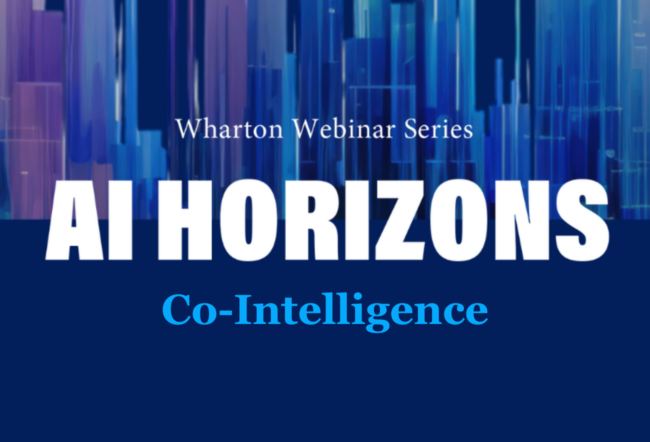The first sign of trouble comes in the form of a gently worded email reminding a web surfer about the illegality of sharing copyrighted material online. From there, it escalates into a pop-up window requiring a web surfer to acknowledge that he or she has read — and understands — a repeat warning. Persistent offenders might see their Internet speeds throttled and be forced into a virtual “holding cell” until they address their infractions with their Internet service provider.
This virtual finger-wagging awaits copyright pirates under a content protection policy being implemented this year by the nation’s largest Internet service providers. The long-gestating program, known officially as the Copyright Alert System but more colloquially as the “six strikes policy,” marks the first time that Internet portals and content providers have worked collaboratively — and publicly — to stop illicit peer-to-peer sharing of copyrighted movies, television and music.
The Copyright Alert System is a collaboration between some of the industry’s heaviest hitters: five of the nation’s largest Internet providers (AT&T, Cablevision, Comcast, Time Warner Cable and Verizon) and two of its most influential trade groups, the Motion Picture Association of America (MPAA) and the Recording Industry Association of America (RIAA). Although details of the six strikes plan surfaced just this year, the background work for the deal was years in the making, according to Kevin Werbach, a Wharton professor of legal studies and business ethics.
“For a very long time, content owners have been pushing Internet service providers (ISPs) to help them enforce intellectual property laws. Network operators have traditionally resisted for several reasons,” he says, noting that ISPs chiefly were worried about the legality of blocking certain content and choosing what content goes on their network. “ISPs are concerned about the administrative and financial burden of being responsible for policing the conduct of millions of users,” Werbach adds. “They’re in the business of providing Internet access to people. Hiring a staff and putting systems into place to [look for copyright infringement] … isn’t something that’s bringing them any business. It’s purely a cost, and it pits the company against its users.”
But by agreeing to the six strikes plan, the ISPs have shifted away from their previous reticence to monitoring their networks for peer-to-peer sharing of copyrighted material. “Content owners have exerted a great deal of pressure, in part because as the Internet evolves, these ISPs want access to certain portions of [their] content,” Werbach notes. “To some extent, the consolidation of Internet services across the market has [led to] a conglomeration of Internet and content providers all working under the same umbrella.”
How It Will Work
The five ISPs jointly created the Center for Copyright Information to oversee the implementation of the six strikes policy. Its executive director is Jill Lesser, formerly the deputy director of public policy and now director of the Civic Media Project at progressive advocacy group People for the American Way. She is overseen by an executive board and has an advisory board offering input on the process.
The progression of warnings to an Internet user who is believed to have shared copyrighted material online is designed to be educational, according to the Center’s website. It will follow a pattern similar to these six steps:
- First and second warnings: The ISP will send a notice, such as an email, to a subscriber, informing the individual that his or her account may have been involved in copyright infringement. This alert will also include educational resources helping the user check the security of his or her home network, provide an explanation of how to avoid copyright infringement and point out legal sources of TV, music and movies online.
- Third and fourth warnings: Another alert, but this time requiring the user to take action to acknowledge its receipt. This could be in the form of a pop-up window or redirection to a landing page with information on the infraction.
- Fifth and sixth warnings: The ISP can take one of several “mitigation measures” specified in the above alerts, such as throttling — or temporarily reducing — the user’s Internet speed, redirecting the user to an educational landing page about copyright laws or “other measures the ISP may deem necessary to help resolve the matter.”
The ISP is not required to terminate service to any user believed to be sharing copyrighted materials on a peer-to-peer network. In fact, the Center for Copyright Information expressly states that termination of a customer’s Internet service is not part of the Copyright Alert System. “This is not a ‘six-strikes-and-you’re-out’ system that would result in termination. There is no ‘strikeout’ in this program,” Lesser wrote in an October 18 statement.
But such a measure isn’t prohibited, either, and that’s what worries Wharton legal studies and business ethics professor Andrea Matwyshyn. “People’s lives depend on Internet access,” she points out. “You are limiting the ability to check a bank balance, to participate in online courses from a university or to get critical information about national emergencies.”
Cutting off Internet access in response to copyright violations, she adds, would be “an ordering of priorities that may end up … limiting a large number of consumers’ [ability to] function in society. We should think carefully about that before embracing any draconian policies.”
Transparency Concerns
The Copyright Alert System comes on the heels of other attempts to limit illicit sharing of copyrighted materials online, including the Stop Online Piracy Act (SOPA) and Protect IP Act (PIPA) introduced in the House of Representatives in 2011. Both were shelved in the face of tremendous public backlash.
This agreement is markedly different from those efforts, Werbach says. The private arrangement skips a legislated approach in favor of a more directed effort. “While it is a private deal, it’s not something that the companies have tried to hide. They have described and justified what they are doing,” he notes. “It seems as though the elements of this agreement are substantially less intrusive than what was called for in the past.”
But the lack of lawmaker involvement doesn’t necessarily make the process better, according to Sherwin Siy, vice president of legal affairs at Public Knowledge, a lobbying group that promotes open access to the Internet. (Its president and CEO, Gigi Sohn, is on the Center for Copyright Information’s advisory board.) “You hear people complain about the cost of trials and the expense of litigation, but the reason that it is expensive and time-consuming is that [society has] safeguards to make sure we get it right,” he says. “That’s what is in the balance here. What happens when there are mistakes [in deciding who is violating copyright law], not just in who is doing the uploading or downloading, but questions [about] how much data gets retained or forked over? It’s easy to over-collect and over-disclose information.”
Werbach, too, is worried about the openness of the process. “The biggest concern is that it is a private deal. There is value in being truly transparent and having a public process,” he notes. “It is certainly better than unilateral action, a backroom deal or misguided legislation. But that is not quite the same as a truly open process.”
Werbach and Siy each gave the Center for Copyright Information high marks for its amount of disclosure thus far. The Center has announced the firm that will be implementing the technical aspects of the monitoring program — MarkMonitor — as well as the name of the consulting business it hired to evaluate MarkMonitor’s systems, Stroz Friedberg. When questions arose about the latter’s lobbying efforts on behalf of the RIAA, the Center hired another expert to review Stroz Friedberg’s report, which it later released to the public for inspection.
“I’m certainly willing to give them credit for what they have done so far,” Siy says. “We keep saying we need to see more about how it’s going to play out. Until very recently, we didn’t know who was going to be doing the monitoring and what their process and methodology was. Knowing that … is essential to seeing [whether] the program is workable. I’m glad they have done that.”
The Long Arm of the Law
No matter how open the process is, it’s extremely likely that the system ultimately will come under the scrutiny of the legal system. The six strikes policy intersects with several areas of law, including intellectual property concerns, privacy concerns of users and contract law, Matwyshyn notes. A long-simmering legal tension over user agreements — think the ubiquitous “I agree” button that every iTunes user has to click with any download, for example — may find a foothold in the six strikes policy’s implementation. “From a contract law perspective, the whole concept that one side can change the terms of a deal traditionally has not been okay,” she points out. “This is a situation that’s ripe for judicial resolution. [One-size-fits-all contracts] eliminate haggling and avoid [the need for] a tailored agreement with each customer, but if you have the same contract with all these millions of people, if a court deems any piece invalid, then you have the same problem in all of those agreements with subscribers.”
Ultimately, the proof of the Copyright Alert System’s success or failure will come in the implementation, observers say. If the warnings target the right users, and people who are wrongly accused of violating copyright have an easy, transparent way to fight the allegations, then the policy will work. “The goal is to have a policy that allows for a robust appeals process and getting accurate information on an individual’s exact conduct … so there are no surprises and no unfair cutoffs of service to people,” Matwyshyn notes. “The devil is in the details, in particular the implementation and the granularity with which the monitoring happens. It will depend on how vigilantly and carefully these legitimate uses of file sharing are carved out from the problematic realm of uses.”
Siy is wary of the program’s promised efficiency, and wonders how easy it will be to navigate for the casual user who may get caught up in its net. Private solutions to such problems, he notes, tend to be “more efficient for the people coming up with the solutions. Consumers generally aren’t at the table. It’s like a privately funded Kafka novel. You have a nongovernmental bureaucracy on top of the public one…. You’re spending a bunch of money on a system that doesn’t actually make things clearer for the user.”



